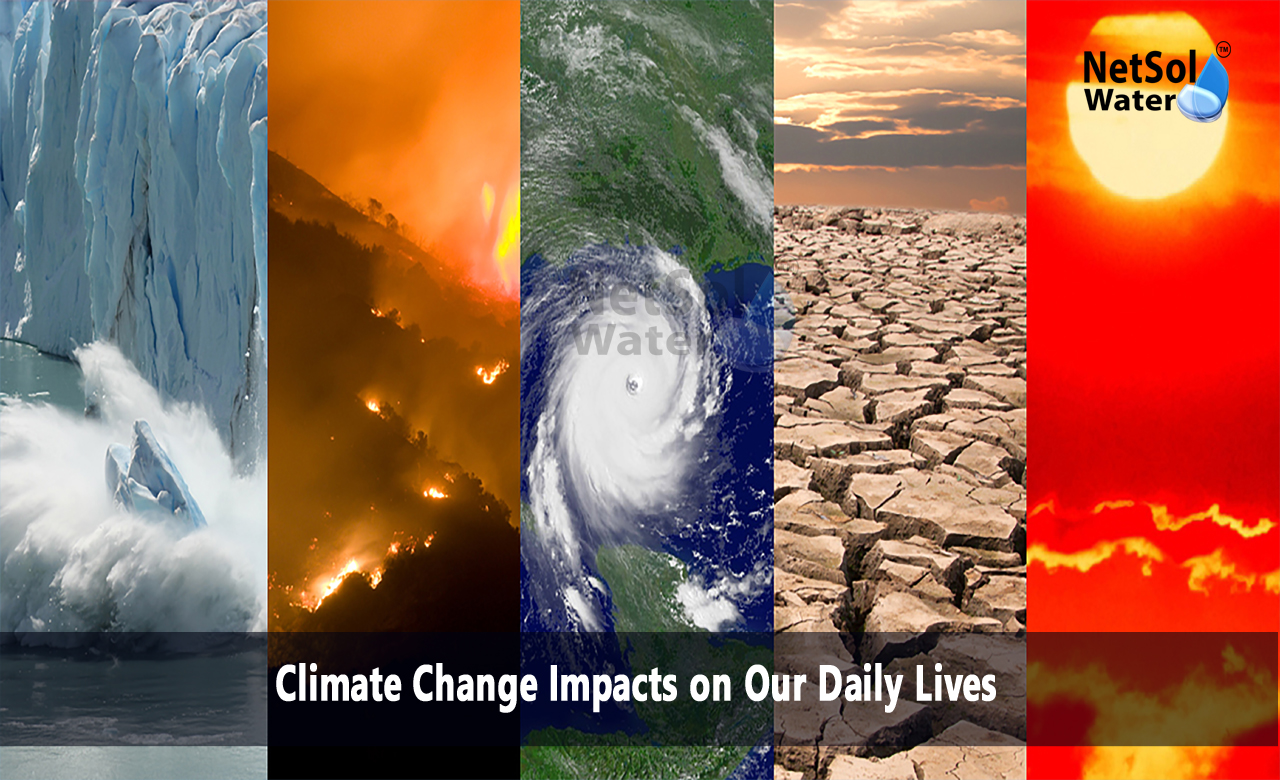How Does Climate Change Impact Our Daily Lives?
Global weather patterns transform our world every day. Climate change impacts shape how we experience each morning and plan our futures. Our communities watch as gardens bloom at strange times and storms grow severer each season. The changes touch our food supplies our energy costs and our health directly. Cities and rural areas alike experience these environmental shifts. We see the effects when we shop for groceries pay our utility bills or check air quality reports. Each person holds the power to shape a better future through understanding how climate change impacts our daily lives. Our actions today will determine what kind of world future generations inherit. This moment demands our attention and action to build sustainable communities. When we know how climate change touches our daily activities we unlock the ability to create meaningful solutions together.
10 Major Effects of Climate Change
Climate change transforms every aspect of human life. These changes ripple through our neighbourhoods and reshape our daily routines. Let us have a look at some ways climate change alters our world.
1.Rising Sea Levels
Ocean waters advance toward coastal homes and businesses each year. Beaches disappear as waves eat away at shorelines. Salt water pushes into community water supplies and transforms coastal ecosystems.
2.Extreme Weather Events
Storms now unleash unprecedented power against our communities. Hurricanes tornados and thunderstorms strike with increasing force. Power lines snap buildings crumble and roads wash away under these intensified assaults.
3.Changed Rain Patterns
Water now floods some regions while others turn to dust. These dramatic shifts endanger crops drinking supplies and outdoor life. Lakes and rivers surge and shrink unpredictably throughout seasons.
4.Heat Waves
Summer unleashes longer stretches of intense heat. Air conditioners strain power networks as temperatures soar. Workers face mounting dangers during outdoor tasks.
5.Wildlife Disruption
Animals abandon traditional migration routes in search of survival. Species struggle as food sources vanish or move. These disruptions cascade through entire ecosystems.
6.Crop Changes
Growing seasons puzzle farmers with new patterns. Plants wither or thrive in unexpected ways. These agricultural shifts send waves through food markets and dinner tables.
7.Health Issues
New illnesses spread into previously unaffected areas. Allergy seasons stretch beyond their traditional bounds. More people experience breathing problems as air quality deteriorates.
8.Economic Impact
Weather risks drive insurance costs skyward. Climate threats reshape property values overnight. Businesses hike to adapt to unstable conditions.
9.Infrastructure Stress
Weather extremes batter roads bridges and buildings relentlessly. Cities strain to maintain power and water systems. Planners must anticipate increasingly unpredictable conditions.
10.Social Changes
Communities transform their daily patterns to survive. Some neighbourhoods become uninhabitable. People seek new homes in more stable regions.
Types of Climate Change
Our planet experiences climate shifts in multiple ways. Knowledge of these patterns helps communities prepare for local changes. Let us have a look at how climate change manifests in different forms.
Long-term Temperature Changes: Each year pushes average temperatures higher. Mild winters give way to scorching summers. Plants and animals struggle to adapt to these steady shifts.
Rapid Weather Shifts: Local weather patterns break from historical norms without warning. Storms appear during traditionally calm seasons. Traditional weather calendars lose meaning.
Regional Climate Shifts: Each area faces unique climate challenges. Deserts expand their boundaries steadily. Former drylands transform into flood zones.
Ocean Pattern Changes: Warming seas drive worldwide weather chaos. Ocean currents abandon ancient routes. These marine changes spark weather disruptions far inland.
Causes of Climate Change
Multiple forces drive our changing climate. These factors weave together to create complex effects. Let us have a look at what powers these environmental transformations.
Greenhouse Gas Emissions: Vehicles factories and power stations pump heat-trapping gases skyward. These emissions accumulate in our atmosphere. Earth retains more heat as these gases build up.
Deforestation: Chainsaws and bulldozers strip away nature's air filters. Fewer trees means more carbon dioxide remains airborne. Lost forests disrupt weather patterns across regions.
Industrial Activities: Factories generate heat and pollutants continuously. Manufacturing processes add greenhouse gases to the atmosphere. Industry consumes resources at unsustainable rates.
Agricultural Practices: Modern farming methods release significant greenhouse gases. Large-scale agriculture transforms entire landscapes. These changes alter regional climate patterns.
Urban Development: Cities create zones of concentrated heat. Construction eliminates natural water flow patterns. Urban expansion disrupts local weather systems.
Conclusion:
Everyone shares responsibility for addressing climate change impacts on our daily lives. Small actions multiply into significant changes when communities work together. Your understanding of these impacts empowers you to make choices that protect our shared future.
Want to discover how climate change affects your neighbourhood? Our environmental experts stand ready to help. We provide personalized guidance to help you understand local impacts and create practical solutions.



